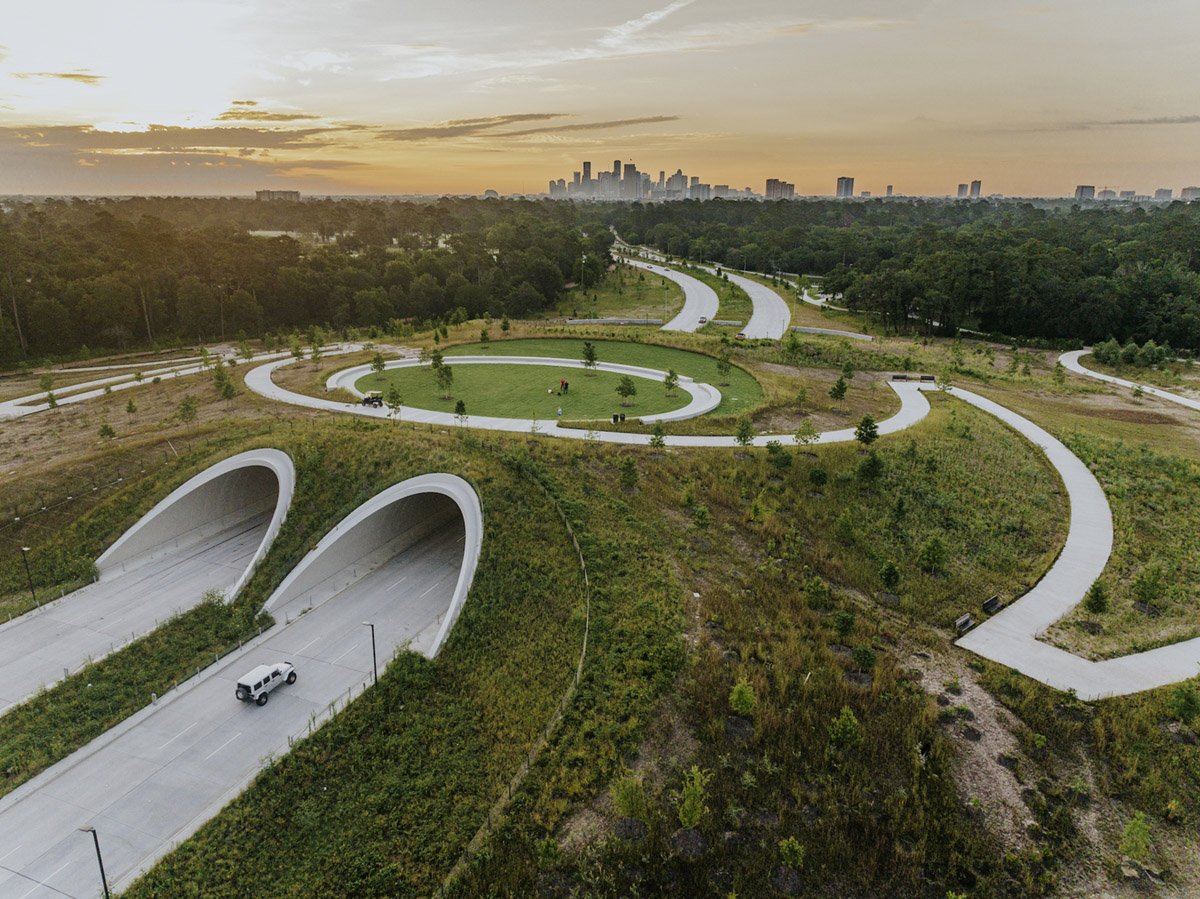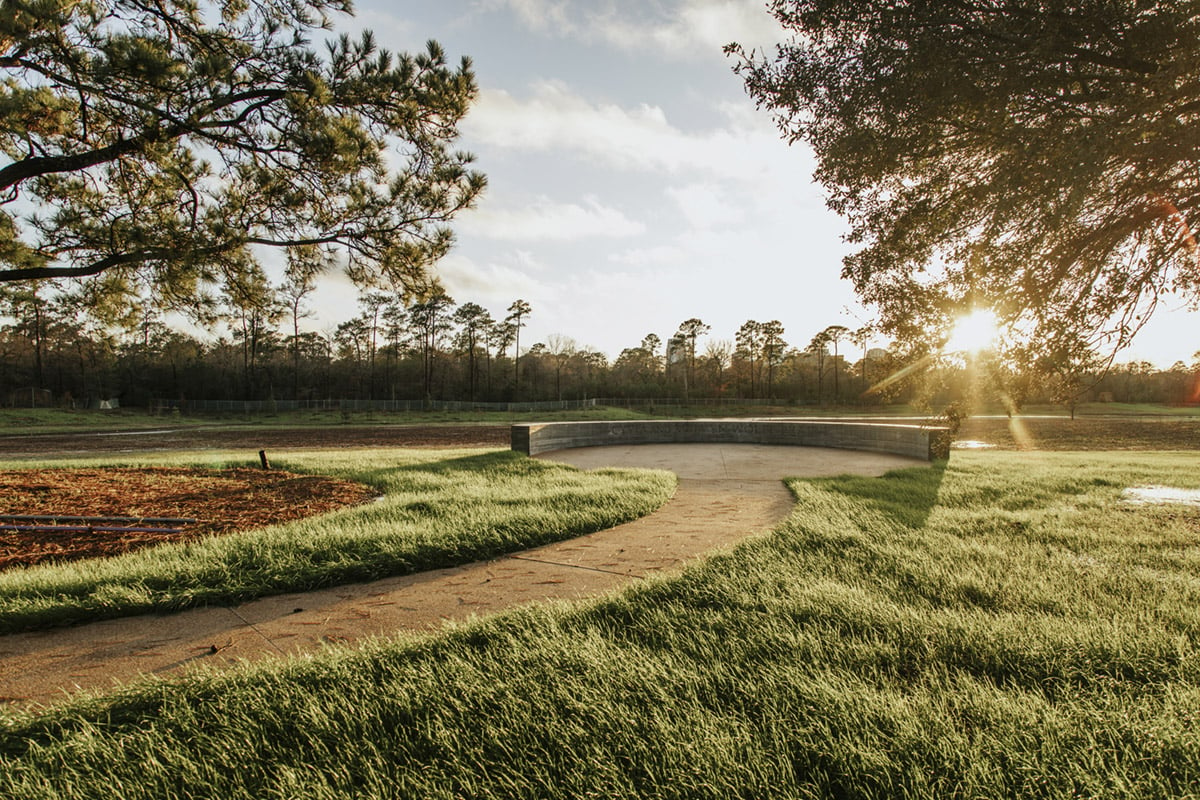| |
 Posted Aug 21, 2023, 3:36 PM
Posted Aug 21, 2023, 3:36 PM
|
 |
FYHA
|
|
Join Date: Oct 2007
Location: Houston - Wichita, KS
Posts: 3,218
|
|
https://metropolismag.com/projects/t...memorial-park/
Quote:
The Rebirth of Houston’s Giant but Ailing Memorial Park
The newly opened Memorial Park Land Bridge and Prairie is the first phase in the revitalization of the drought-stricken 1,500-acre park, the largest urban green space in Texas.
By: Sam Lubell
Photography: Nick Hubbard
At 1,500 acres—more than twice the size of New York’s Central Park— Houston’s Memorial Park is the largest urban wilderness in the city, and in all of Texas for that matter. While beloved as a place to escape the concrete jungle— Houstonians come here to hike, bike, picnic, relax, or play tennis or golf— all was not well here for some time.
For one, the park had long been divided by a six-lane highway, Memorial Drive, which kept visitors from exploring, or even understanding, the park as a whole; dividing habitats, and interrupting natural processes like rainwater retention. And it was for years dangerously unhealthy, crippled by hands off land management, overgrowth, invasive and non-native plantings, and rotting roots; an unbalanced eco-system, increasingly vulnerable to both storms and drought due to increased peripheral development and climate change. A major drought spanning from 2011 to 2014 exposed this condition, with an estimated 80 percent of the oasis’s tree canopy destroyed in many places.
The response to this loud ecological wakeup call, and to a growing chorus of Houston residents, was a 2015 master plan led by Charlottesville and New York-based Nelson Byrd Woltz to restore and reimagine the entire park. Its first phase, the 100-acre Memorial Park Land Bridge and Prairie, which opened earlier this year, is a model for reviving and strengthening habitats and merging infrastructure with ecology; what Nelson Byrd Woltz principal Thomas Woltz calls landscape infrastructure.
“Why should we separate habitat restoration and large scale infrastructure?” asks Woltz. He adds that as cities become both denser and more vulnerable to natural disasters this approach is likely to become the norm, not the exception.
This kind of all-encompassing approach, adds Woltz, isn’t new. It was standard practice in the days of Frederick Law Olmsted, the designer of Central Park, who famously merged landscape, infrastructure, and culture to create some of the most impactful manmade landscapes ever created. As specialization became the norm in all the design fields, engineers (and their concrete and steel bulwarks against natural challenges like flooding ) would often come to lead major infrastructure projects, with landscape architects relegated to the planting and shaping of gardens, parks, and other greenspaces. Woltz hopes to again “expand the language of landscape architecture and what it could be.”
The firm’s wide-ranging work at Memorial Park is funded by the Houston-based Kinder Foundation and Houston’s Uptown Development Authority and managed by the Memorial Park Standards Committee (a partnership including the Memorial Park Conservancy, Houston Parks and Recreation, and other parties). The land bridge and prairie—the result of untold hours of research, design, and construction, not to mention thousands of hours of civic outreach—spans Memorial Drive via two dramatic landscape bridges, rising 34 feet above the roadway atop parabolic concrete paneled arches, cut back dramatically to visually merge with the landscape . The bridges and surrounds were blanketed with 540,000 cubic yards of soil, all taken from the park itself, carefully infused with seeds, fungi, and other natural elements from the nearby Katy Prairie. Topped with diverse plantings and amenities, the oval-shaped land bridges dramatically reduce traffic noise, re-connect habitats, expand the park’s trail system, and even provide a culvert stream corridor running under Memorial Drive, aiding significantly with park drainage.
Woltz knew things were heading in the right direction when he climbed on top of the land bridge, just topped out, and saw a slew of animal footprints in the mud. “To watch it come alive was an incredible moment,” he says.
|




|
|
|



